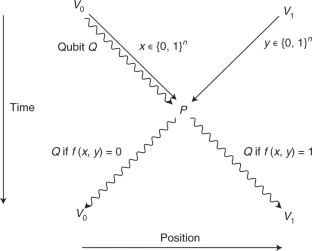Distributing entangled photon pairs over noisy channels is an important task for various quantum information protocols. Encoding an entangled state in a decoherence-free subspace (DFS) formed by multiple photons is a promising way to circumvent the phase fluctuations and polarisation rotations in optical fibres.
Recently, it has been shown that the use of a counter-propagating coherent light as an ancillary photon enables to faithfully distribute entangled photon with success probability proportional to the transmittance of the optical fibres.
Several proof-of-principle experiments have been demonstrated, in which entangled photon pairs from a sender side and the ancillary photon from a receiver side originate from the same laser source. In addition, bulk optics have been used to mimic the noises in optical fibres.
A Japanese team has demonstrated a DFS-based entanglement distribution over 1 km optical fibre using DFS formed by using fully independent light sources at the telecom band, and obtain a high-fidelity entangled state. This shows that the DFS-based scheme protects the entanglement against collective noise in 1 km optical fibre.
In the experiment, they utilised an interference between asynchronous photons from continuous wave pumped spontaneous parametric down conversion (SPDC) and mode-locked coherent light pulse. After performing spectral and temporal filtering, the SPDC photons and light pulse are spectrally indistinguishable.
This property allows to observe high-visibility interference without performing active synchronisation between fully independent sources.
The paper has been published in Nature npj.


